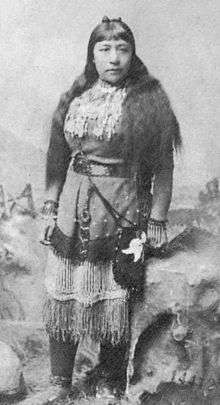Cronin Point Site
|
Cronin Point Site (35TI4) | |
| Location | Address restricted[lower-alpha 1][1] |
|---|---|
| Nearest city | Manzanita, Oregon |
| Area | 2.2 acres (0.89 ha)[2] |
| MPS | Native American Archeological Sites of the Oregon Coast MPS |
| NRHP Reference # | 01000128 |
| Added to NRHP | March 6, 2001 |
The Cronin Point Site (Smithsonian trinomial: 35TI4) is an archeological site located in Nehalem Bay State Park near Manzanita, Oregon, United States, that was occupied probably between 1600 and 1800 CE. The site is characterized by a significant quantity of burned, fire-cracked rock, indicating the presence of hearths and other cultural activities associated with occupation and a possible village site. Artifacts in the site include stone flaking debris, and a smaller number of projectile points, glass pieces, bone pieces, and shell fragments. Notably, the site also includes shards of Chinese and Japanese ceramicware, datable by their design to ca. 1550–1680 CE, which link the Cronin Point Site to the Nehalem Beeswax Shipwreck.[lower-alpha 2] The site spans both submerged and exposed areas; auger-based studies suggest that occupation of the site ended abruptly, likely when the land it rests on subsided due to a large earthquake.[2]
Further study of the Cronin Point Site has potential to yield information related to the "protohistoric" period of sporadic contact between Native Americans and Europeans, prior to the intensive interactions of cross-continental trade and emigration. It may also shed light of the impact of seismic events on the peoples and environments of the Oregon Coast. Other potential research questions relate to environmental change in the Oregon Coast region, settlement and subsistence patterns, emergence of ethnographic patterns among coastal people, changes in cultural patterns around contact with European Americans, and other topics.[2][4]
The Cronin Point Site was listed on the National Register of Historic Places in 2001.[5]
See also
Notes
- ↑ Federal and state laws and practices restrict general public access to information regarding the specific location of sensitive archeological sites in many instances. The main reasons for such restrictions include the potential for looting, vandalism, or trampling.
- ↑ The Beeswax Shipwreck was a Spanish ship engaged in the Manila–Acapulco trade in the 17th or 18th century. Its wreck while en route to New Spain introduced large quantities of beeswax, along with other items such as ceramics, into Native American trade along the Oregon Coast for a century or more afterward.[3]
References
- ↑ Knoerl, John; Miller, Diane; Shrimpton, Rebecca H. (1990), Guidelines for Restricting Information about Historic and Prehistoric Resources, National Register Bulletin (29), National Park Service, U.S. Department of the Interior, OCLC 20706997.
- 1 2 3 Losey, Robert; Erlandson, Jon (August 9, 1999), National Register of Historic Places Registration Form: 35-TI-4, Cronin Point Site (redacted PDF), retrieved October 4, 2015.
- ↑ Williams, Scott (n.d.), "Beeswax shipwreck", The Oregon Encyclopedia, archived from the original on September 21, 2015, retrieved October 4, 2015.
- ↑ Moss, Madonna L.; Erlandson, Jon M. (August 31, 1996), National Register of Historic Places Multiple Property Documentation Form: Native American Archaeological Sites of the Oregon Coast (PDF), retrieved September 28, 2015.
- ↑ National Park Service (March 16, 2001), Weekly List of Actions Taken on Properties: 3/05/01 through 3/09/01, archived from the original on October 5, 2015, retrieved October 4, 2015.


